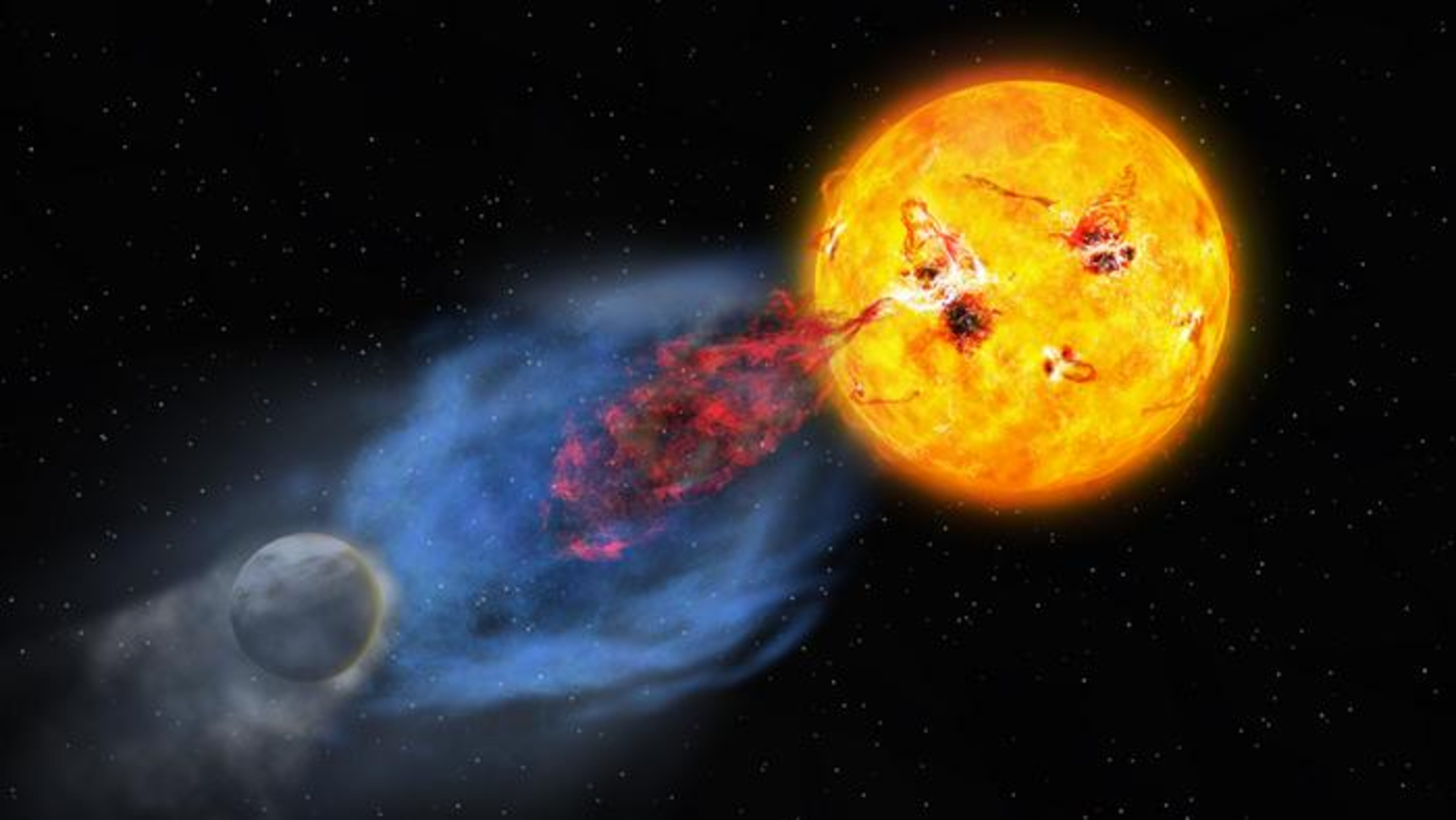Powerful solar storms may help life get going on alien planets. Here's how
"What inspired us most was the long-standing mystery of how the young sun's violent activity influenced the nascent Earth."

A coronal mass ejection on another star has been witnessed in its entirety for the first time, revealing that when these violent outbursts take place on young stars, they pack enough energy to potentially kickstart the chemistry of life on any orbiting planets.
Young stars can be much more tumultuous than older stars. Stellar physics predicts that in our sun's formative years it was throwing off flares of radiation and coronal mass ejections (CMEs) far more powerful and more frequent than what the sun can manage today.
Yet no one had actually seen a young sun-like star being so energetic — until now.
A coronal mass ejection and its accompanying flare occur when taut magnetic field lines on the sun or another star snap, releasing a huge burst of energy before the field lines reconnect. This energy manifests as a brightening on the surface of the sun or star, while it can lift a huge plume of plasma straight from the corona, which is the ultra-hot outer layer of a star's atmosphere.
We're familiar with observing CMEs on our sun, but extraterrestrial CMEs are more difficult to spot. Nevertheless, ground-based telescopes observing at the hydrogen-alpha wavelength have detected cool, lower-energy plasma being burped off young stars during CMEs. The next step was to search for the higher-energy release of energy that stellar physicists believe characterizes the frequent CMEs from young stars.
To that end, a multi-national team of astronomers led by Kosuke Namekata of Kyoto University in Japan have made a breakthrough by targeting the young sun-like star EK Draconis, which is 112 light-years away from Earth in the constellation of Draco, the Dragon. The star is thought to be 50 million to 125 million years old, which is considered very young for a star that will exist for billions of years, and has a mass (0.95 solar masses), radius (0.94 solar radii) and surface temperature (5,560 to 5,700 kelvin) that are very close to the values for our sun.
"What inspired us most was the long-standing mystery of how the young sun's violent activity influenced the nascent Earth," said Namekata in a statement. "By combining space- and ground-based facilities across Japan, Korea and the United States, we were able to reconstruct what may have happened billions of years ago in our own solar system."
Breaking space news, the latest updates on rocket launches, skywatching events and more!
Namekata's team performed simultaneous observations of EK Draconis with the Hubble Space Telescope, NASA's Transiting Exoplanet Survey Satellite (TESS) and three ground-based telescopes in Japan and Korea. The Hubble observations were in ultraviolet light, which enabled the detection of the higher-energy components of a CME, while the ground-based telescopes tracked the cooler plasma via its hydrogen-alpha emission and TESS watched for brightening caused by the accompanying flare.
Together, Hubble and the ground-based telescopes detected the spectral lines from the emission of a CME on EK Draconis. Hubble's ultraviolet vision detected a cloud of hot plasma with a temperature of 100,000 kelvin (180,000 degrees Fahrenheit). The amount of Doppler shifting in the ultraviolet spectral lines from the star indicated that the hot plasma had been ejected at a velocity of 300 to 550 kilometers per second (670,000 to 1.2 million mph). Ten minutes later, a plume of cooler gas at 10,000 kelvin (18,000 degrees Fahrenheit) appeared, moving more slowly at 70 kilometers per second (157,000 mph). Together, the hot and fast component and cool and slow component were both two sides of the same CME.
The hot component of the CME carried much more energy than the cooler plasma. This much energy released on a regular basis, researchers said, would be significant enough to drive chemical reactions in a planetary atmosphere, producing greenhouse gases that could keep a planet warm, as well as breaking atmospheric molecules apart so they can reform as complex organic molecules that could potentially act as the building blocks of life. (No exoplanets have been detected orbiting EK Draconis yet, but it does have a probable red dwarf companion star.)
The observations therefore are a rare insight into the role that stars can play in the origin of life, a role that our sun may have played 4.5 billion years ago and which other stars may be doing today.
The findings were published on Oct. 27 in the journal Nature Astronomy.

Keith Cooper is a freelance science journalist and editor in the United Kingdom, and has a degree in physics and astrophysics from the University of Manchester. He's the author of "The Contact Paradox: Challenging Our Assumptions in the Search for Extraterrestrial Intelligence" (Bloomsbury Sigma, 2020) and has written articles on astronomy, space, physics and astrobiology for a multitude of magazines and websites.
You must confirm your public display name before commenting
Please logout and then login again, you will then be prompted to enter your display name.
